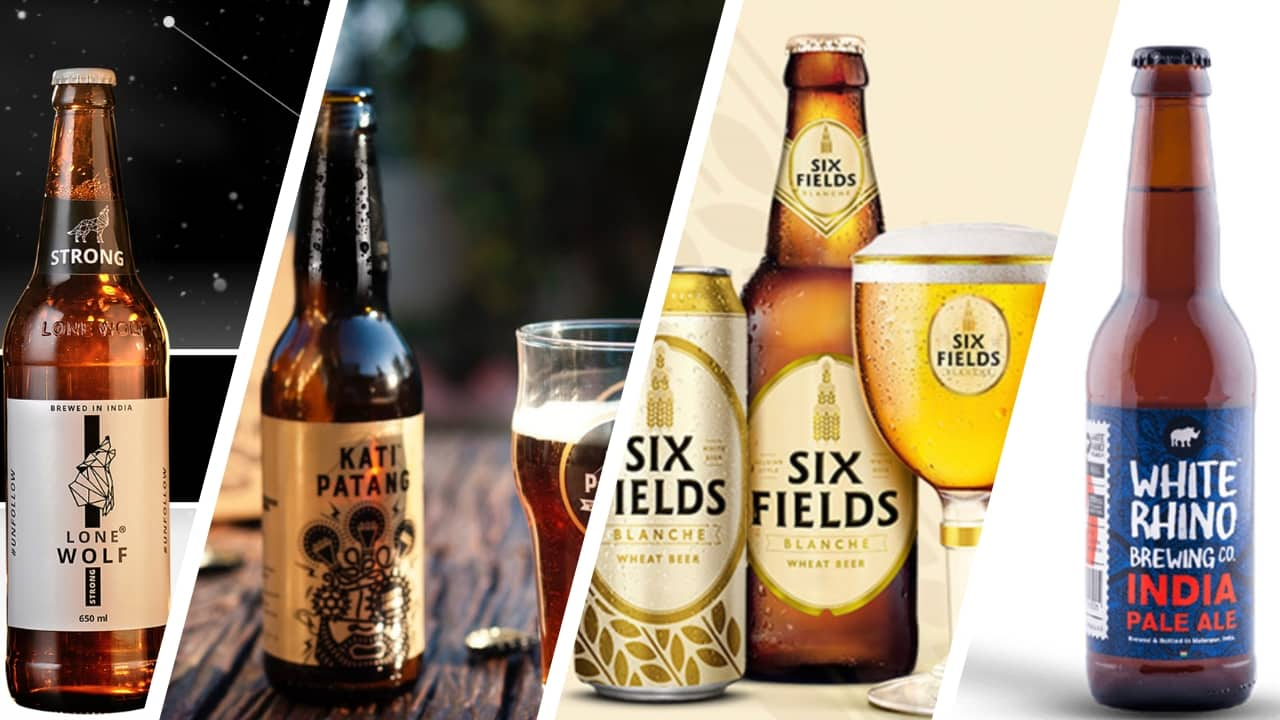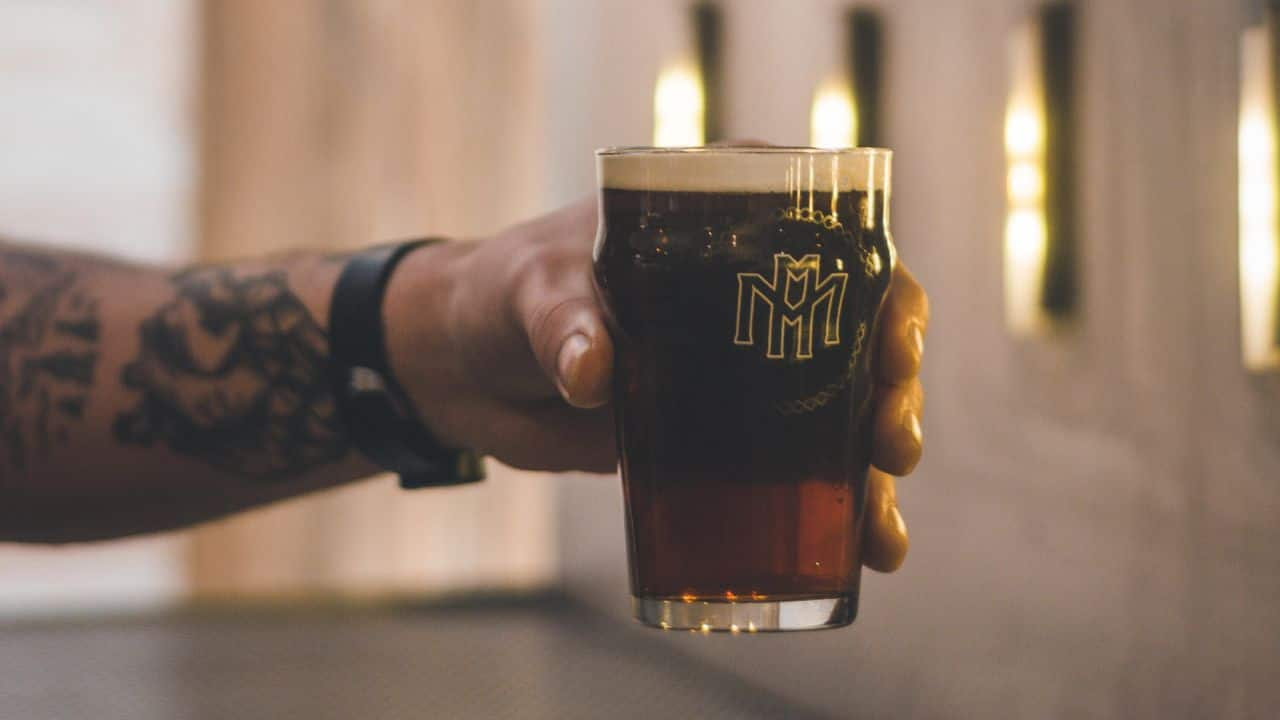



How many days a year could be devoted to beer worldwide? Given the antiquity and popularity of beer globally, turns out, there are many: The US observes National Beer Day on April 7 to commemorate the day in 1933 when the American President lifted prohibition to allow the production of beer up to 4 percent alcohol by volume (ABV). Oktoberfest, the annual two-week celebration in Munich that now has copycats around the world, comes around in late Setember. Then there is Beer Can Appreciation Day (January 24), Beer Lovers Day (September 7), India Pale Ale Day (August), and International Beer Day which is marked each year on the first Friday of August as a celebration of beers, bars and beer cultures worldwide. This year International Beer Day falls on August 2. Before you head out to the nearest microbrewery or bar to join in the celebration, and raise a glass to India's burgeoning beer culture, consider these 5 points on how to pick the right beer for you and to pair with your food.
1. Types of beerBeer is brewed is every part of the world. The Egyptians, of course, take the cake when it comes to beer antiquity. Belgian Trappist beer and German Klosterbrauerei Andechs have been made in the same way for centuries. And in India, there is a reference to a kind of rice beer from Vedic times. Most beers made today can be slotted into two categories: lager or ale, though there are further categories and subcategories too.
Today, over 90 percent of beer sold in India is lager, says Arijit Ghosh, vice-president of sales at LoneWolf Bev. A lighter-bodied beer, lagers are typically low on bitterness, lighter on the stomach than some other types of beer and has some very cheap variants in India.
Having said that, there are times when an ale or stout might be better suited as accompaniment to your food. As such, it can be helpful to know about the types of beer and what to expect from each one:
Lager: To brew lager, yeast is added from the bottom of the container to ferment a mix of malted and unmalted barley, water and hops. Most beer sold in India is lager beer. Kingfisher, Carlson, Budweiser, Heineken, Tuborg, Haywards 5000 all sell varieties of lager.
Ale: India pale ale (IPA), Belgian ale, brown ale, pale ale, and stout are all types of ale that are top-fermented and tend to be fruitier. In terms of colour, they can be darker than lagers and pilsners, but not always. These beers may also be unfiltered, and create a feeling of fullness after one or two pints.
It's a wrong notion that lighter coloured beer has lower ABV (percentage of alcohol by volume," says Prasanna Kumar, founder of BLR Brewing Co, which has four outlets in Bangalore, including a 1,200-seater in Whitefield.
So, the first consideration before you pick a brew should be: lighter lager or fruitier ales. There are bottled and craft options available for both, at multiple price points.
Further, if you are keen to try non-alcoholic beer or gluten-free beer, there are variants from beer makers like Budweiser, Kingfisher, Cobra and Stag. But these tend to be more expensive.
2. Beer and biryani, and other food pairingsBeer and biryani is a classic combo. But you can also pick a beer to complement, contrast or cut your meal, explains LoneWolf's Anurag K. Here's what that means:
Beer that complements your meal will have a similar flavour profile. A seafood main course can be paired with a wit beer that contains coriander and citrus peel to complement the mild and aromatic taste, LoneWolf's Ghosh says.
Beer that contrasts your meal has a diametrically opposite aroma and flavour profile to your food. If you're having spicy tikkas or kebabs, Ghosh adds, try a dry and crisp lager with it.
Beer that cuts your meal can have a tempering effect, like eating something spicy, like jalapenos, and following it up with a beer that cuts through that heat.
You could also look at pairing beers depending on the course, like stout beers with dessert. Case in point: Chocolate brownie paired with a milk stout (contains lactose), says Prasanna Kumar.
Milk or milkshake stout is also called ice-cream stout, says Kumar, adding that the lactose in it makes the beer creamier and smoother.
 Indian beer makers are offering more options in terms of types of beer and price points. (File image)3. Cost of beer in India
Indian beer makers are offering more options in terms of types of beer and price points. (File image)3. Cost of beer in IndiaThere's a reason why beers like Haywards 5000 continue to be popular in India - they are value for money if what you really want is a beer that gets you high quickly.
Yet as yuppie culture spreads to different parts of the country, craft makers and microbreweries are pushing the limits of what drinkers are willing to pay. With dozens of beers on offer, imported beers, different types of beers, small-batch brews, experimental brews, there are multiple experiences on tap here. Case in point: Notice how the foam forms in nitro-beer compared with beer with carbon-dioxide added post-fermentation for that extra fizz, says Prasanna Kumar of BLR Brewing Co.
Imported and experimental beers can cost a pretty penny per pint. With brands like Duvel, Murphy's, Chimay Red, Guinness, Leffe Blonde and Schneider Weisse charging a premium among bottled beers, and MRP breaching Rs 500 a pint in some cases.
Consider also the amount of enzymes (to aid fermentation), preservatives and added sugars used in beer - these tend to be lower in craft beer, but then you also pay a premium for that.
 It's a common misconception that lighter beers always have lower alcohol by volume. (Image credit Joaquin Romero via Unsplash)4. Beer culture in India
It's a common misconception that lighter beers always have lower alcohol by volume. (Image credit Joaquin Romero via Unsplash)4. Beer culture in IndiaThe world over, beer consumption has dropped by 3 percent, according to the World Health Organization's 'Global status report on alcohol and health and treatment of substance use disorders' released on June 25, 2024. In India, however, microbreweries are coming up in areas like Bengaluru, Hyderabad, Pune, Gurgaon, and beyond.
While cheap, dark beers (the darker colour comes from roasting the barley to a particular temperature) dominate the market in terms of numbers, makers of craft beer are now also emerging around the country.
To be sure, there are still some constraints to their growth. Industry insiders say it's an extremely price-sensitive market, for example. There are also constraints like consumer exposure to different types of beers - more experienced drinkers, for instance, might be more open to trying India Pale Ales that register upwards of 40 on the international bitterness scale (IBU index). For context, LoneWolf's Anurag K says, most beers available in India have an IBU of 10-15.
That the market for cold beers is hotting up can be gauged from the growing number of brews on wine shop shelves and brands registered in select cities. Reuters reported in June that the sales of beer are expected to rise 10% in summer.
Anurag K says that there are 83 brands of beer registered in Delhi alone. And while beer sales across India are still cornered by the cheaper variants of dark beer, the beer culture in select cities of India where there is a strong yuppie (young, fashionable, well-paid set) presence seems to be enough to give more craft makers the courage to jump into the deep end of the keg.
5. Bitter-sweet experience levelFor Prasanna Kumar, a primary question while picking a beer is to ask how experimental are you feeling?
Most of us graduate from fairly sweet spirits, wines and beers to more complex flavours. So, it might be hard for someone who's never tasted beer to immediately fall in love with a bitter India Pale Ale. A Belgian wit beer made with wheat, coriander and citrus peel might be more palatable. As could a German Hefeweizen - also made with wheat.
Internationally, wit beer is supposed to have 50 percent wheat which contributes to its sweeter taste. In India, however, the percentage of wheat in wit beer is typically under 30 percent, says LoneWolf Bev founder Anurag K. This has to do with the ease of production.
On the other end of the spectrum, more experienced and experimental drinkers might appreciate a robust ale or stout. Some might even prefer the more hoppy (and therefore more bitter) brews, or might be interested to know about the type and origin of hops in their beer.
So, the next time you walk into a bar or brewery, consider what you're really in the mood for: a light pilsner, a dark ale, a smooth stout, a hoppy IPA, or just the plain old lager (strong or light) that you have known and possibly loved for years. Cheers.
Discover the latest Business News, Sensex, and Nifty updates. Obtain Personal Finance insights, tax queries, and expert opinions on Moneycontrol or download the Moneycontrol App to stay updated!
Find the best of Al News in one place, specially curated for you every weekend.
Stay on top of the latest tech trends and biggest startup news.